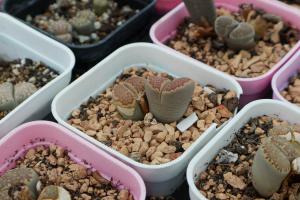Introduction
Native plants are plants that are naturally found in a particular region and have evolved over a long period of time to adapt to local environmental conditions. These plants are an important part of the ecosystem, providing habitat and food for wildlife and helping to maintain soil and water quality. However, many people wonder whether native plants need water or if they can survive without it. In this article, we will explore the topic of whether native plants need water and provide some tips on how to conserve water when gardening with natives.
Understanding Native Plants
Before discussing the water needs of native plants, it is important to understand a bit about how they have adapted to their environment. Native plants have evolved to thrive in specific climates, soils, and rainfall patterns. Some native plants, such as cacti and succulents, have adapted to survive in desert regions with very little water, while others, such as ferns and mosses, are adapted to grow in wet, shady areas. However, even plants that are adapted to low-water conditions still require some water to survive and thrive.
Factors Affecting Water Needs
Several factors can affect the water needs of native plants, including the species of plant, the climate and weather patterns in the region, soil type and quality, and the amount of sun or shade the plant receives. Some native plants may need more water during periods of drought or extreme heat, while others may be more tolerant of dry conditions. Additionally, young plants may need more water than mature plants, as their root systems are still developing.
Conserving Water When Gardening with Natives
If you are planning on incorporating native plants into your garden or landscaping, there are several things you can do to conserve water and minimize the need for irrigation. First, choose plants that are well-suited to your region and climate. Local nurseries and gardening centers can help you identify native plants that are adapted to your area. Second, select plants that are drought-tolerant and require minimal water. Third, mulch around the base of plants to help retain moisture in the soil. Lastly, water your plants in the early morning or late evening to reduce evaporation and water loss.
Conclusion
In conclusion, while native plants are adapted to survive in specific environmental conditions, they still require some water to survive and thrive. However, by selecting drought-tolerant species and utilizing water conservation techniques, it is possible to minimize the amount of water needed to maintain a thriving native garden or landscape. By doing so, you can help conserve water and promote a healthy ecosystem.

 how many times do yo...
how many times do yo... how many planted tre...
how many planted tre... how many pine trees ...
how many pine trees ... how many pecan trees...
how many pecan trees... how many plants comp...
how many plants comp... how many plants can ...
how many plants can ... how many plants and ...
how many plants and ... how many pepper plan...
how many pepper plan...
































